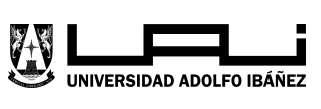CIENCIA ANORMAL. EL ESCENARIO COSMOLÓGICO CON MATERIA OSCURA
DOI: https://doi.org/10.15691/0718-5448Vol8Iss2a220
Resumen
Referencias
Cowan, C.L. Jr., Reines, F., Harrison, F.B., Kruse, H. W., Mcguire, A.D., “Detection of the Free Neutrino: a Confirmation”, Science, 124 (3212), 1956, pp. 103-104.
Einasto, Jaan, “Dark Matter”, Astronomy and Astrophysics, in Encyclopedia of Life Support Systems (EOLSS), Oxford, U.K., arXiv: 0901.0632 v2 [astro-ph.CO], 2010.
Kroupa , P. Et Al., “Local-Group tests of dark-matter concordance cosmology. Towards a new paradigm for structure formation?”, Astron. Astrophys., 523, A32, [arXiv:1006.1647 [astro-ph.CO], 2010.
Navarro, J.F., Frenk, C.S. &White, S.D.M, “The diversity and similarity of simulated cold dark matter haloes”, Mon. Not. R. Astron. Soc., 402, 2010, pp. 21-34.
Nickles, Thomas , “Scientific Revolutions”, Zalta, Edward N. (Ed.), The Stanford Encyclopedia of Philosophy (Winter 2013 Edition), forthcoming URL = .
Oberheim, Eric & Hoyningen-Huene, Paul, “The Incommensurability of Scientific Theories”, Zalta, Edward N. (ed.), The Stanford Encyclopedia of Philosophy (Spring 2013 Edition), URL = .
Ostriker, J.P. & Peebles, P.J.E., “A numerical study of flattened galaxies: or cancold galaxies survive”, Astrophys. J., 186, 1973, pp. 467-480.
Planck Miss ion 2013, Planck Legacy Archive, 21/03/2013, Planck 2013 results, XVI, “Cosmological parameters”, arXiv: 1303.5076v1 [astro-ph.CO].
Rubin, V., Ford, K. & Thonnard, N., “Rotational properties of 21 Sc galaxies with a large range of luminosities and RADII, from NGC 4605 (r=4kpc) to UGC 2885 (r=122 kpc)”, The Astronomical Journal, 238, June 1 1980, pp. 471-487.
Sanders, Robert H., The Dark Matter Problem. A historical perspective, Cambridge University Press, Cambridge, 2010.
Sutton, Christine, Spaceship Neutrino, Cambridge University Press, Cambridge, 1992.
Theocharis, T. & Psimopoulos, M., “Where science has gone wrong”, Nature, Vol. 329, No. 6140, 15 October 1987, pp. 595-598.
Tremaine, S., “A Historical Perspective on Dark Matter”, in Kormendy, J. & Knapp , G.R. (Eds.), IAU Symposium, Vol. 117, Dark matter in the universe, 1987.
Zwicky, Fritz, “Der Rotverschiebung von extragalaktischen Neblen”, Act. Helv. Phys., 6, 1933, pp. 110-127.
-------------------, “On masses of nebulae and clusters of nebulae”, Astrophys. J., 86, 1937, pp. 217-246, pp. 237-238.
Enlaces refback
- No hay ningún enlace refback.
Copyright (c) 2018 Alan Heiblum Robles

Este obra está bajo una licencia de Creative Commons Reconocimiento-CompartirIgual 4.0 Internacional.



